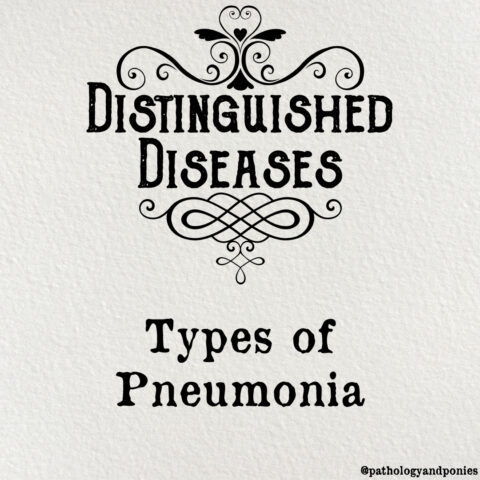
Equine Metabolic Syndrome (EMS) and Pituitary Pars Intermedia Dysfunction (PPID) are both common, older horse conditions that veterinarians see daily. They can also cause a lot of the same clinical signs, despite being very different diseases. So what is the difference between them?
Table of Contents
Equine Metabolic Syndrome
At its simplest, EMS is an endocrine dysfunction of insulin, which is used to push glucose into cells. Normal horses will experience an increase in insulin levels when blood glucose levels increase, which increases glucose storage in cells and provides them with energy. In EMS, the horses have insulin dysregulation, meaning they have hyperinsulinemia even with normal or low levels of blood glucose. EMS typically affects horses between 5 and 15 years of age.
Pathogenesis
The exact cause of EMS is unknown, however it has a strong correlation to obesity. The horses that typically develop EMS are the “thrifty” or “easy-keeper” breeds like ponies and Arabians, who historically were adapted to survive on low amounts of forage or poor quality forage. Thus, it has been postulated that the “thriftiness” adaptation may make insulin more sensitive to glucose levels, causing increased insulin levels.
Clinical Signs
- Obesity with “regional adiposity“, meaning that they are likely to develop pronounced fat pads in the crest, behind the shoulder and over the tailhead.
- Laminitis. The exact pathogenesis of laminitis from EMS is unknown, but may have to do with changes in blood flow to the hoof, or release of matrix metalloproteinases which degrade the collagen in the laminae.
- “Get fat on air”. This isn’t a specific clinical sign, but owners will often say that their horse seems to stay obese, even when fed minimal amounts of feed.

Photo © Wikimedia Commons contributor Evelyn Simak licensed under CC 2.0.
Diagnosis
As mentioned, these horses are insulin dysregulated with hyperinsulinemia. To diagnose insulin dysregulation, horses are often subjected to an oral sugar test. In this test, the horse is fasted for up to 12 hours, then given a large dose of corn syrup by mouth. Then, blood is collected for insulin concentration assessment an hour later. In a normal horse, insulin should have returned to normal levels by that point. If the horse still returns a high insulin level, they are considered to be insulin dysregulated.
Because PPID often presents with similar clinical signs, or can be present at the same time as EMS, it is also important to rule it out. More on how to diagnose that later!
Treatment
The mainstays of EMS management are diet changes and increased exercise. In some cases, medical treatment may be needed to help get the horse back on track.
Dietary management involves reducing the horse’s carbohydrate intake, which serves to reduce blood glucose levels and prevent an excessive amount of insulin release. These horses often have to be restricted to dry lots with no grass, use a grazing muzzle or only fed low-carbohydrate ration balancers and low-carbohydrate forage.
At the same time, the exercise for these animals should be slowly increased to get the weight off. Studies have shown that five exercise sessions with at least 30 minutes of canter work can increase insulin sensitivity, and help treat the dysregulation. However, it is critical that the animal is slowly introduced to the exercise regime, particularly if they have experienced laminitis.
In severe cases, thyroxine, the main thyroid hormone, may be given to these animals to stimulate their metabolism and help them burn calories. Metformin may also be used, which decreases the elevated blood glucose and insulin levels associated with eating.
Pituitary Pars Intermedia Dysfunction
PPID is another disease that can cause insulin dysregulation, and is more commonly seen in horses over 18 years of age. However, PPID is associated with a benign tumour producing insulin inhibitors that block insulin function, rather than a functional issue with insulin levels like EMS. By blocking insulin function, glucose is not able to move into the cells, and remains in the blood stream. The hyperglycemia stimulates more and more production of insulin, eventually leading to hyperinsulinemia. Thus, PPID horses can present similarly to EMS horses, despite the different pathogenesis of insulin dysregulation.
Pathogenesis
PPID is caused by a pituitary gland adenoma, which disrupts the normal hormone production of the pituitary gland. In particular, this adenoma is fund in the pars intermedia, which is responsible for converting POMC into adrenocorticotropic hormone (ACTH). ACTH’s main role is stimulating the adrenal cortex to produce cortisol, which ultimately produces the clinical signs seen with PPID. With a pituitary adenoma, the dopamine-responsive neurons that inhibit POMC processing are degenerated, leading to uncontrolled conversion of POMC to ACTH, leading to elevated ACTH levels.
Clinical Signs
- Hypertrichosis or a long, nonshedding hair coat. This is probably the most classic clinical sign with PPID, and occurs from pituitary adenomas producing another derivative of POMC called melanocyte-stimulating hormone, which is used in hair growth during winter.
- Laminitis, for similar reasons as in EMS.
- Polyuria and polydipsia due to increased cortisol.
- Abnormal fat distribution and poor muscle tone.

Photo © Wikimedia Commons contributor Abujoy licensed under CC 3.0.
Diagnosis
PPID can be diagnosed by measuring blood ACTH concentrations, or by a TRH stimulation test. Just taking an ACTH concentration is very susceptible to fluctuations based on the time of year, which can make the test inaccurate in some cases. Blood ACTH concentration should only be examined between August and December in the Northern hemisphere.
The TRH stimulation test is considered more sensitive for diagnosis, but is still susceptible to seasonal fluctuations. Thyrotropin-releasing hormone normally increases blood ACTH levels, but horses with PPID have an over-exaggerated reaction to the hormone. So, a small amount of TRH is administered to the horse, and if the horse returns a very high level of ACTH afterwards, they may have PPID.
Treatment
Unlike EMS, PPID requires medical treatment to get the disease under control. The medication of choice is pergolide, which is a dopamine agonist. Because it is a dopamine agonist, it can help stimulate the degenerating dopamine-responsive neurons that inhibit POMC production, allowing the ACTH and cortisol levels to come back under control. These horses often require frequent body clipping in the summer to prevent excessive sweating, or other cooling mechanisms like fans or misters.
Comparison Table
| Disease | Underlying Cause | Clinical Signs | Diagnosis | Treatment |
|---|---|---|---|---|
| EMS | Unknown | Obesity with regional adiposity Laminitis | Oral glucose test | Diet changes Exercise |
| PPID | Adenoma in the pituitary | Hypertrichosis Laminitis PU/PD Abnormal fat distribution | ACTH concentration TRH stimulation test | Pergolide |
Check Your Understanding
Zachary JF. Pathologic Basis of Veterinary Disease, Sixth Edition.
Kritchevsky JE. Hypertrichosis Associated with Adenomas of the Pars Intermedia. Merck Veterinary Manual 2020.
Kritchevsky JE. Overview of Equine Metabolic Syndrome. Merck Veterinary Manual 2020.




